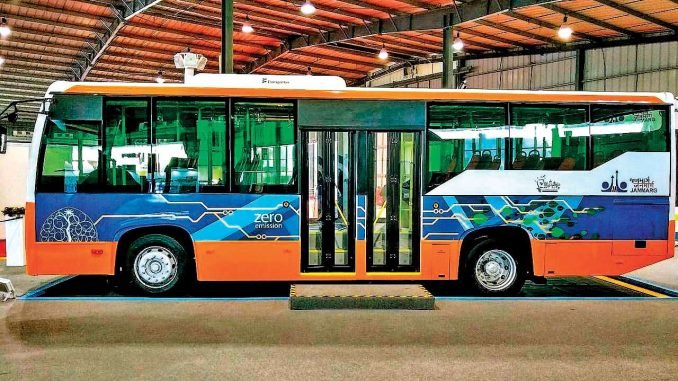brts system revolutionises urban transportation locally & globally for good

In an era where urban congestion and environmental concerns dominate the headlines, the Bus Rapid Transit System (BRTS) has emerged as a game-changer in urban transportation. BRTS is revolutionizing commuting patterns and contributing to sustainable mobility worldwide. With its efficient design, reliable service, and environmental benefits, BRTS has garnered global recognition and praise from experts and commuters alike.
BRTS is popularly termed “Metro on Wheels”.
BRTS combines the flexibility and cost-effectiveness of buses with the speed and reliability of rail-based transit systems, offering a viable alternative to private vehicles and traditional bus networks. By providing dedicated lanes, off-board fare collection, and well-designed stations, BRTS systems ensure swift and comfortable journeys for passengers, effectively reducing travel time and increasing efficiency.
According to a recent report by the Institute for Transportation and Development Policy (ITDP), BRTS systems have been successfully implemented in over 200 cities worldwide, spanning continents and diverse urban landscapes. The report highlights the positive impact of BRTS on cities, including reduced traffic congestion, improved air quality, and enhanced accessibility for all residents.
BRTS has proven to be a cost-effective and sustainable solution for cities facing mobility challenges. It offers a flexible and scalable option that can be tailored to the unique needs of each urban environment. Gujarat in India has three BRT systems operational in its three major cities of Ahmedabad, Surat and Rajkot.
The twin cities of Hubballi-Dharwad, the second-largest urban cluster in Karnataka become the newest addition to cities to have a BRTS in place. The introduction of a new central corridor exclusively for public buses has provided a comfortable commute option for daily goers.
Nupur Gupta in World Bank Blog writes that “The state-of-the-art Bus Rapid Transit System (BRTS) between the commercial hub at Hubballi and the educational and administrative centre at Dharwad has made public buses faster, more convenient, comfortable and reliable, in addition to being safer for women.”
The success stories of BRTS systems are evident in several cities globally. Curitiba, Brazil, widely regarded as the birthplace of BRTS, implemented its first line in 1974. Today, the city boasts a comprehensive BRTS network comprising nine corridors that serve over 2.3 million passengers daily, reducing private vehicle usage and congestion significantly.
Ahmedabad, India, another city that embraced BRTS, witnessed a remarkable transformation in its transportation landscape. Launched in 2009, the Janmarg BRTS system has become the backbone of the city’s public transportation, accommodating over 180,000 passengers daily. With reduced travel times, increased ridership, and reduced emissions, Ahmedabad’s BRTS has become a model for other Indian cities.
The success of BRTS is not limited to Latin America and Asia. In Istanbul, Turkey, the Metrobüs system has played a crucial role in improving the city’s mobility. With dedicated lanes stretching over 50 kilometres, the Metrobüs transports approximately 800,000 passengers daily, providing a reliable and efficient mode of transportation in a city of over 15 million residents.
The benefits of BRTS extend beyond improving transportation efficiency. Studies have shown that cities with well-designed BRTS systems experience reduced air pollution levels, contributing to better public health outcomes. Furthermore, BRTS projects often stimulate urban development, attracting investment and revitalizing surrounding areas.
The success of BRTS systems globally has prompted cities to recognize the potential of this innovative transportation solution. Many cities, including Lagos, Nigeria, and Jakarta, Indonesia, are currently implementing their own BRTS networks, acknowledging the positive impact on urban mobility and sustainability.
As urban populations continue to grow and environmental concerns escalate, the success of BRTS systems serves as an inspiration for cities worldwide. By providing efficient, sustainable, and accessible transportation options, BRTS paves the way for a future where urban mobility is synonymous with efficiency, reduced congestion, and improved quality of life for all residents.
However, BRTS needs to innovate and improvise further to make it the most sustainable and reliable mod of commute in cities. Bus-based BRTS needs more push to create a sustainable model of travel where public transport users are prioritized with first and last-mile connectivity.

